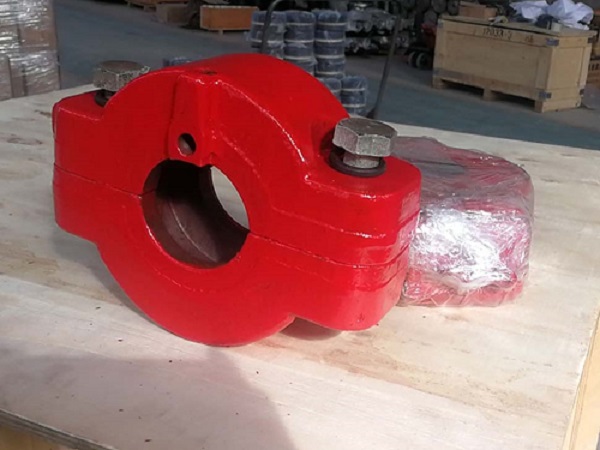What are the triplex mud pump piston rod and piston rod clamp?
Aug 20, 2025
In Oil Drilling Operations, the Triplex Mud Pump, as a core pressurization equipment, the performance of its key components directly affects drilling efficiency and safety. The piston rod and piston rod clamp are core components ensuring the stable operation of the mud pump. The following is a detailed professional analysis:
Ⅰ. Triplex Mud Pump Piston Rod
1. Main Structure
The Triplex Mud Pump Fluid End Part Piston Rod typically adopts a stepped cylindrical structure, consisting of a rod body, connecting thread section, seal mating section, and guide section:
Rod Body: The main load-bearing part, requiring high strength and fatigue resistance.
Connecting Thread Section: Connects to the fluid end piston or power end crosshead. Thread precision must comply with API standards (e.g., API Spec 7K) to ensure connection reliability.
Seal Mating Section: Contacts with cylinder liner seals. Surface roughness must be controlled within Ra 0.8~1.6μm to ensure sealing performance and reduce mud leakage.
Guide Section: Assists the piston rod in reciprocating motion within the cylinder liner, reducing the risk of eccentric wear.
2. Material Selection
To adapt to the harsh conditions of high-pressure (typically 15~35MPa) and high-sand-content mud in oil drilling, piston rod materials must meet:
Base Material: 42CrMo alloy steel (tensile strength ≥1080MPa, yield strength ≥930MPa), subjected to quenching and tempering (hardness 28~32HRC) to ensure comprehensive mechanical properties.
Surface Treatment: Plasma spray-welded nickel-based alloy or induction hardening is applied, achieving a surface hardness of HRC 55~60 and forming a 50~100μm wear-resistant layer.
3. Working Principle
Driven by the crankshaft in the power end of the triplex mud pump, the piston rod transmits reciprocating motion through the mud pump crosshead, pushing the fluid end piston to alternately complete the suction stroke (mud enters the cylinder liner from the suction pipe) and discharge stroke (mud is discharged at high pressure through the discharge valve into the drilling fluid circulation system), realizing continuous pressurized transportation of mud.
4. Key Technical Parameters
Stroke Length: Common range 160~300mm, affecting single-cylinder displacement.
Reciprocating Speed: 0~150 cycles/min, adjusted by diesel engine or motor speed.
Maximum Working Pressure: Must match drilling conditions, typically 20MPa or 35MPa; high-pressure pumps can reach 70MPa.
Straightness Error: ≤0.05mm/m to avoid eccentric wear with the cylinder liner during operation.
5. Failure Modes
Surface Wear: Abrasion of the seal mating section caused by scouring of sand particles in mud or friction with seals, leading to mud leakage.
Fatigue Fracture: Under high-frequency reciprocating loads, fatigue cracks easily occur in stress concentration areas such as thread transitions or rod body, eventually leading to fracture.
Corrosion Damage: Hydrogen sulfide stress corrosion (SSC) or pitting, especially prone to occur in acidic drilling fluid environments.
6. Maintenance Requirements
Regular Inspection: Measure surface wear every 500 operating hours. Re-chrome plating is required when chrome plating wear exceeds 50%.
Thread Inspection: Use thread gauges to check thread precision; replace immediately if thread slipping or deformation is found.
Non-Destructive Testing: Use magnetic particle testing (MT) or penetrant testing (PT) to inspect for cracks in the rod body, ensuring no hidden defects.
Ⅱ. Triplex Mud Pump Piston Rod Clamp
The Triplex Mud Pump Piston Rod Clamp is a dedicated tool for maintenance, installation, and testing of mud pumps. It is used for precise positioning and fastening of the piston rod, ensuring safety and accuracy during disassembly, assembly, and maintenance operations.
1. Core Functions
The piston rod clamp is mainly used for maintenance and overhaul of triplex mud pumps. When replacing pistons, seals, or inspecting/repairing the piston rod, it can firmly fix the piston rod in a specific position to prevent movement, facilitating operator operations. Additionally, during piston rod installation, the clamp can assist in precise positioning, ensuring coaxiality with other components, improving assembly accuracy, and reducing equipment failures caused by improper assembly.
2. Common Types
Bolt-Clamped Clamp: Fixes the piston rod through bolt tightening force. Usually composed of two semi-annular clamp bodies, whose inner surfaces match the outer surface of the piston rod to ensure clamping reliability and uniformity. During clamping, rotate the bolts to make the two clamp bodies gradually close and hold the piston rod.
Hydraulic Clamped Clamp: Uses pressure from a hydraulic system to clamp the piston rod. It has the advantages of large clamping force and convenient operation, suitable for fixing piston rods of large triplex mud pumps. Typically composed of hydraulic cylinders, jaws, etc., it drives the jaws to clamp the piston rod through hydraulic oil pressure pushing the cylinder piston.
Magnetic Clamped Clamp: Fixes to the piston rod surface using magnetic adsorption. This type of clamp has a simple structure, easy installation and disassembly, but relatively small clamping force, generally suitable for small triplex mud pumps or occasions with low clamping force requirements.
3. Structural Composition
Clamping Mechanism: Includes jaws and screw/ hydraulic cylinder. Jaws are lined with copper or rubber pads to avoid damaging the piston rod surface during clamping.
Support Base: Made of cast iron or welded steel plate structure, ensuring sufficient rigidity (deformation ≤0.1mm). The base is equipped with leveling bolts to adapt to different operating platforms.
Positioning and Guiding Components: Such as V-blocks (90° or 120° angle) and scale rulers, used for positioning the piston rod axis.
4. Material Requirements
Jaw Body: 45# steel subjected to quenching and tempering (hardness 22~25HRC). Lining material is wear-resistant cast iron or polyurethane (Shore hardness 85~90).
Support Structure: Q235B steel plate welded and then aged to eliminate internal stress and avoid deformation.
5. Operation Specifications
Clean oil stains and mud on the piston rod surface before clamping to ensure close contact between the clamp and the rod, improving clamping effect.
Apply uniform force during clamping to prevent piston rod bending (especially for slender rods). For hydraulic clamps, pressure should be controlled at 70%~90% of the rated value.
Apply thread grease (e.g., extreme pressure lithium grease) during thread disassembly/assembly to avoid thread seizing.
6. Industry Standards
Must comply with relevant standards for oil drilling equipment, such as:
Safety performance requirements for tooling clamps in API Spec 7K 《Specification for Drilling and Well Servicing Equipment》.
Regulations on the use of maintenance tools in SY/T 5225 《Technical Regulations for Fire and Explosion Prevention in Oil and Gas Drilling, Development, and Storage and Transportation》.
Ⅲ. Correlation and Importance of Piston Rod and Clamp
In the triplex mud pump system, the performance of the piston rod directly determines the pump's displacement stability and pressure output capacity, while the piston rod clamp is a key auxiliary device ensuring piston rod installation accuracy and extending service life. The core requirements for their cooperation include:
The positioning accuracy of the clamp must match the straightness and coaxiality requirements of the piston rod to avoid early wear caused by installation errors.
The clamping method of the clamp must adapt to the material characteristics of the piston rod to prevent surface damage affecting sealing performance.
In the high-pressure and high-risk environment of oil drilling, high-quality piston rods and standardized use of clamps are important guarantees for reducing pump failure downtime and lowering drilling costs, playing an irreplaceable role in improving the continuity and safety of drilling operations.
Read More





 Language :
Language : English
English Русский
Русский عربي
عربي
 GET A QUOTE
GET A QUOTE



 IPv6 network supported
IPv6 network supported